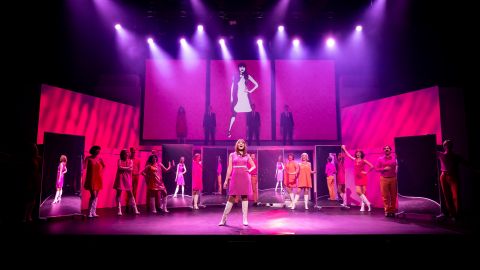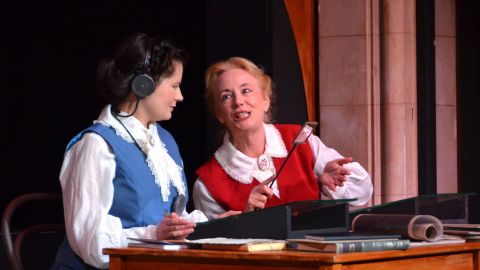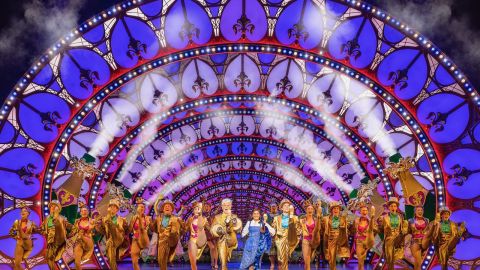Intimacy On Stage
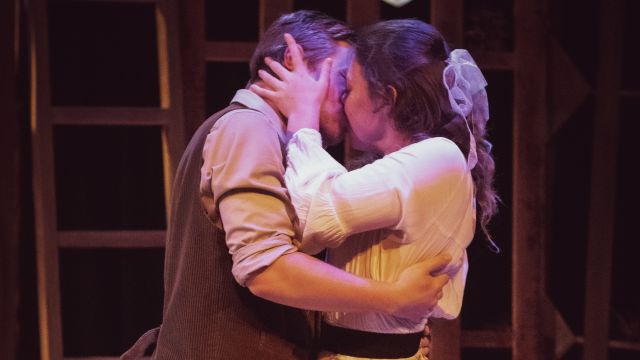
Photographer: Chelsea Hideki
Cast members used to be asked to work intimate and hyper sensitive moments out for themselves. Carrie Thiel, a Wellington based director, fight director, actor and intimacy coordinator, told Olivia Greenberg why intimate touching and violence on stage need to be coordinated and worked out sensitively.
My first actual kiss was a stage kiss. I was 14 years old, and I was playing Liesl in The Sound of Music. Luckily for us, the young man playing Rolf and I were good friends. Being community theatre, we all knew each other and the director was also a family friend of mine.
But I don't remember there being any process around it. It was just assumed that we would do this thing, and I think we just got on with it. We never really talked about it. Looking back now, and certainly moving forward, I think it's important that directors, in collaboration with actors, establish why the moment is in the script, and all are given the opportunity to say, “what are we comfortable with and how do we want to tell this story?”
You don't have to have lip to lip contact to tell the story of love or attraction. There's a myriad of ways to tell that story, through body language, eye contact, or other types of touch or kiss.
No one should be making assumptions about anyone coming into a creative process. You can't assume people’s lived experience, sexual or otherwise, based on their age or gender presentation, or what boundaries they may have — we don't know what people are coming in with.
That's why we have to check in and have a process around these sorts of moments. We need regular conversations. People might be fine with the content, but then they also might discover as they go that they're not fine, and then feel unable to back out because they’ve already said yes.
When I'm teaching intimacy best practice, I use a version of the five pillars that were established by Intimacy Directors International. These include Context, Consent, Choreography, Closure, and clear, concise Communication which sits before, during, and after all those steps.
Before anything happens, there must be clear communication and everybody must know the context of the story. If you're asking a designer to design sets or costumes, they are going to take into account many aspects of the script, along with the vision of the director, which will influence their design. It's the same when we're blocking any scene. You're looking at the wider context. You're looking at the motivations and intentions of the characters to inform the action.
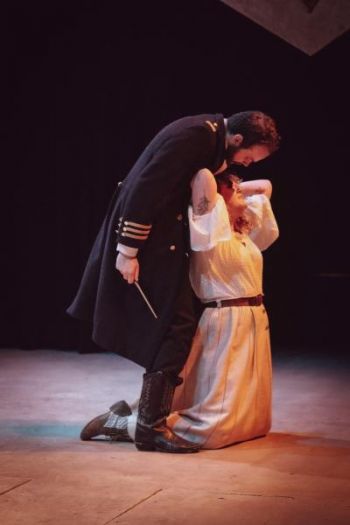 Once you start working with violence or intimacy, lines can get blurred unless there is a structure in place. What's the context of the moment? What’s the wider story? Where does the moment start? Who's initiating it? Where and how does it end? You want to have a robust discussion about that and understand why you're doing the things that you're doing.
Once you start working with violence or intimacy, lines can get blurred unless there is a structure in place. What's the context of the moment? What’s the wider story? Where does the moment start? Who's initiating it? Where and how does it end? You want to have a robust discussion about that and understand why you're doing the things that you're doing.
How it is structured really depends on the actors. You might have one actor say, “ I'm fine with whatever.” But the other actor says, “ I really need this marked out. I need to know the specifics of what we're doing.” The aim is always to create a safe, repeatable, and effective moment of storytelling.
It's important that you have these conversations. Many directors are hesitant to actually put time into direct intimate moments, because they either do not have the language for it or are unsure of how to go about it. This is precisely how the role of the Intimacy Director was born. Intimacy Directors can lead this process, identify any power imbalances and act as an advocate for cast and crew, while choreographing moments that sell the director's vision. I always ask directors what their non-negotiables are. If they have a particular vision, what are the things that they absolutely must have?
Things like if actors must have lip to lip contact or if they have to be fully or partially nude . Those are the things that actors need to know before they even agree to doing a role.
Often actors are left to figure out those moments for themselves. Which can lead them to feel anxious because they don’t know what is required of them, what exactly the scene will entail, how long it will take, etc. If there are no parameters and we are not talking about how the moment informs the story, then they can be left feeling like their own sexuality is on display, or even that they are being taken advantage of.
This is what happened to me as an actor, which led me to retraining as an Intimacy Director a few years ago. After many years working behind the scenes as a performance and fight director I got back on stage myself, and I had to play an intimate moment with a fellow cast member.
We were only a week away from opening and we had never rehearsed or even talked about this moment - not even the broader context/scene. I finally said to the director, "What is the expectation here? What are you planning?” To which they replied, “You can go work that out for yourselves.” Sending two actors to privately work out a moment of intimacy for themselves is simply not a professional or appropriate practice, so I sought some help from colleagues that were doing this work at the time, and now, after training as an Intimacy Director, I have a robust practice to help others with scenes like this.
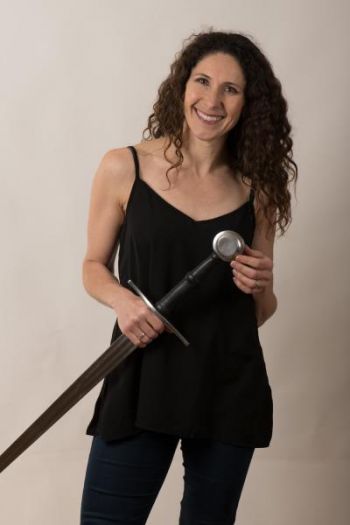 I approach intimacy directing in a very similar way to fight directing. I create a risk assessment, break down what I'm seeing in the script and talk to the director about their vision before sitting down with the actors. Ideally I am brought on at the same time as other members of the design team, so that we can work collaboratively and communicate throughout the design and rehearsal process. The worst thing is when (and this has happened so many times) directors make assumptions that an actor will be fine with a particular thing, and then discover that, no, not at all. My main rule is don't make assumptions.
I approach intimacy directing in a very similar way to fight directing. I create a risk assessment, break down what I'm seeing in the script and talk to the director about their vision before sitting down with the actors. Ideally I am brought on at the same time as other members of the design team, so that we can work collaboratively and communicate throughout the design and rehearsal process. The worst thing is when (and this has happened so many times) directors make assumptions that an actor will be fine with a particular thing, and then discover that, no, not at all. My main rule is don't make assumptions.
We've heard stories now of people that very much felt taken advantage of, and coerced into doing things that they would have otherwise not said yes to. As actors, we are often trained to say “yes”, but I think it's important that somebody is there to help people express their boundaries and choreograph action that is going to best tell the story.
Early on in my career as a Fight Director, I would create choreography, then pass it on to whoever I was working with. That's an inappropriate thing to do in intimacy because we want to ensure actors work within their personal boundaries to find the appropriate action for their characters.
I have adapted my fight directing with this in mind as well.
Intimacy Directors aim to facilitate a space where people feel confident to voice an authentic “yes” or an authentic “no”, creating a safe emotional and physical space for people to be brave and creative.
We are not mental health professionals. Many intimacy directors come from movement, acting and directing backgrounds. While we have a lot of awareness and training around mental health, we don't work as mental health practitioners. It's also worth noting the importance of the stage manager, or a production manager, who is present for all the rehearsals.
Your stage manager would be taking the notation and running those rehearsals, and running a call before each rehearsal and show. Just like you would have a fight call to review choreography before each show, this gives a chance for the actors to check in and talk about things like, “Hey, how did that go for you last night?” So actors have an opportunity to say “I felt like we rushed this part,” or “Today I don't want to be touched in this place. Can we adjust it?” It also gives the stage manager an opportunity to note any discrepancies in the choreography.
Communication is key - at the beginning, middle, end, and all throughout the creative process. If everyone is on the same page, you will have a more enjoyable experience.
https://www.intimacycoordinatorsaotearoa.co.nz/carrie-bio/


